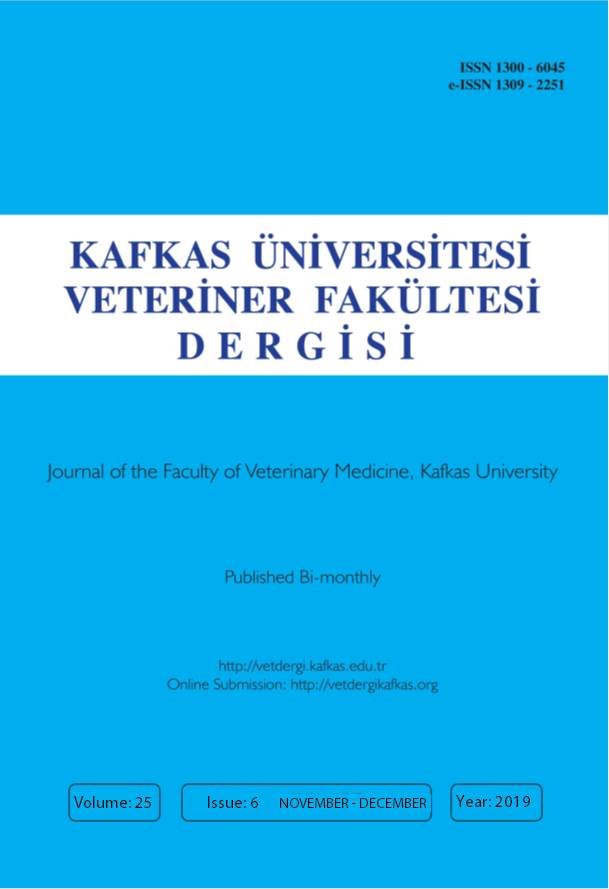
This journal is licensed under a Creative Commons Attribution-NonCommercial 4.0 International License
Kafkas Üniversitesi Veteriner Fakültesi Dergisi
2019 , Vol 25 , Issue 6
Effect of Sugammadex and Rocuronium Combination on Cranial Neurotoxicity in Rats: Experimental Study
1Anesthesiology and Reanimation Department, Adiyaman University Medical School, TR-02100 Adiyaman - TURKEY
DOI :
10.9775/kvfd.2019.21885
Sugammadex is frequently used in clinical anesthetic practice. In order to determine whether sugammadex has neurotoxic effect, histopathological evaluation and antioxidant status of brain and cerebellum tissues were investigated. Thirty-two adult sprague dawley rats were divided into four groups. Purine Control Group (Group 1, n=8) had no action. The control group (Group 2, n=8) received 16 mg/kg serum physiologic, the sugammadex group (Group 3, n=8) received 16 mg/kg sugammadex and the sugammadex+rocuronium group (Group 4, n=8) received 16 mg/kg sugammadex and 1 mg/kg rocuronium. After drug administration, brain and cerebellum tissues were evaluated histological and biochemically for and oxidative damage. The overall structure of the brain and cerebellum tissues were normal in all groups. Images of the layers and the neurons contained there in were normal. No pathological findings were found. There had no statistically significant difference between the groups in terms of glutathione enzyme activity levels (GSH-Px) and the malondialdehyde (MDA) levels in rat brain. GSH-Px and MDA levels had a slight increase in sugammadex and sugammadex+rocuronium group in cerebellum tissues. These increases were statistically significant. But this increase did not cause any histopathological damage to the cerebellum tissue. The study demonstrates that sugammadex is safe for reversal of rocuronium effects in rats. Sugammadex in the dose ranges used in the studies, did not produce adverse effects in rats brain and cerebellum tissues.
Keywords :
Rat, Neuromuscular Block, Sugammadex, Rocuronium, Brain tissues, Cerebellum tissues, Neurotoxicity










